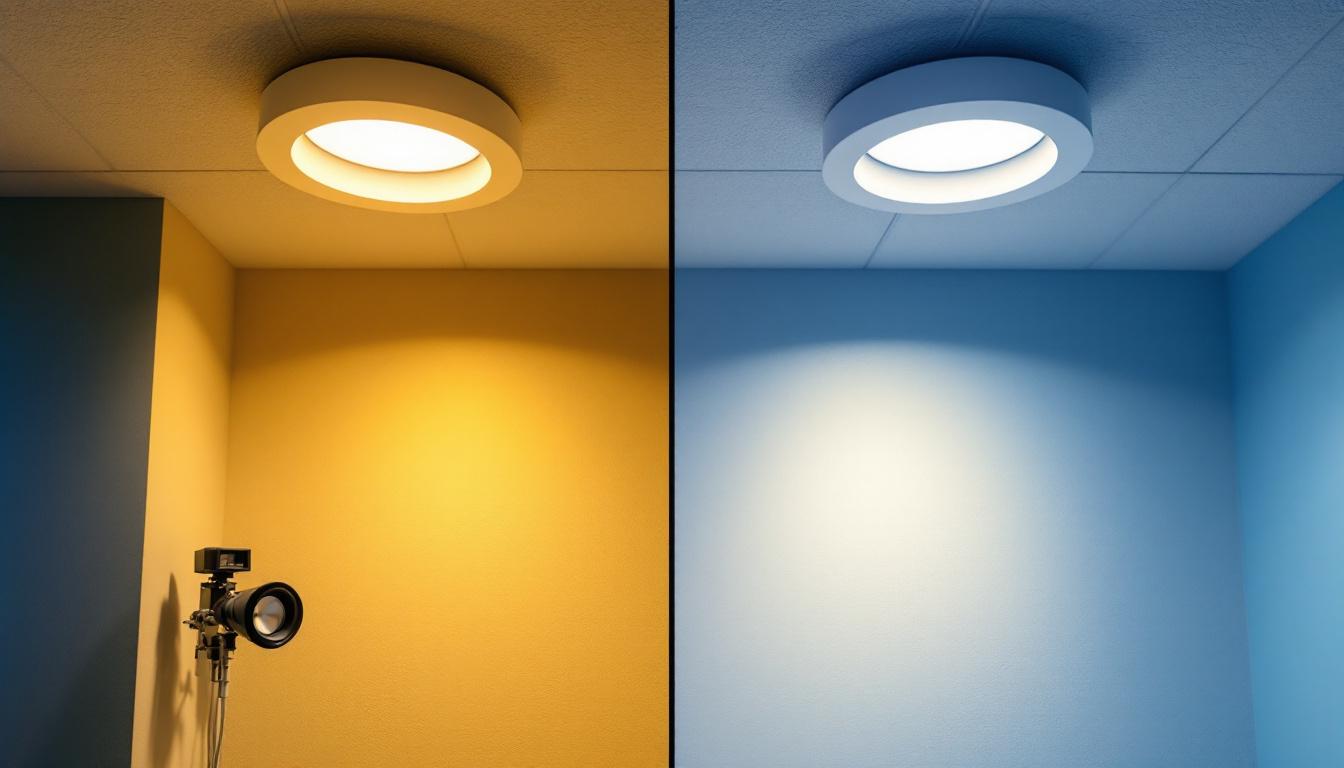
In the ever-evolving landscape of urban development, street lighting plays a pivotal role in ensuring safety, enhancing aesthetics, and promoting energy efficiency. For lighting contractors, understanding the nuances of street bulb lighting can lead to significant cost savings and improved project outcomes. This article delves into various strategies that lighting contractors can employ to optimize their operations and reduce expenses while maintaining high-quality service.
Energy efficiency is not just a buzzword; it is a fundamental aspect of modern street lighting solutions. With rising energy costs and increasing environmental concerns, lighting contractors must prioritize energy-efficient solutions that can lead to substantial savings over time. The push for energy efficiency aligns with global sustainability goals, aiming to reduce carbon footprints and promote greener urban environments. As cities expand and populations grow, the demand for effective and sustainable lighting solutions becomes even more critical.
The choice of bulb technology can greatly impact energy consumption. LED technology has emerged as a frontrunner in street lighting due to its longevity and efficiency. Unlike traditional incandescent or halogen bulbs, LEDs consume significantly less power and have a longer lifespan, which reduces the frequency of replacements. This longevity not only minimizes waste but also contributes to a reduction in the environmental impact associated with manufacturing and disposing of lighting fixtures.
Moreover, the initial investment in LED fixtures may be higher, but the long-term savings on energy bills and maintenance costs can be substantial. Contractors should consider the total cost of ownership rather than just the upfront costs when selecting lighting solutions for their projects. Additionally, advancements in LED technology continue to improve color rendering and brightness, making them an even more attractive option for urban lighting applications. The ability to customize lighting designs with LEDs also allows for creative solutions that enhance the aesthetic appeal of public spaces.
Integrating smart lighting systems can further enhance energy efficiency. These systems allow for real-time monitoring and control of street lights, enabling contractors to adjust brightness levels based on traffic patterns or weather conditions. For instance, dimming lights during low-traffic hours can lead to significant energy savings. This adaptability not only conserves energy but also extends the lifespan of the lighting fixtures, as they are not operating at full capacity unnecessarily.
Additionally, smart systems can provide data analytics that help contractors optimize maintenance schedules, reducing the costs associated with frequent bulb replacements and repairs. By investing in smart technology, contractors can not only save costs but also offer clients cutting-edge solutions that enhance overall safety and convenience. Furthermore, these systems can be integrated with other smart city initiatives, such as traffic management and environmental monitoring, creating a cohesive approach to urban planning and infrastructure development. The potential for interconnected systems opens up new avenues for innovation and efficiency in city management, making smart lighting a crucial component of future urban landscapes.
The installation phase is critical for ensuring the long-term performance and cost-effectiveness of street lighting. Efficient installation practices can minimize labor costs and reduce the risk of future issues.
Thorough pre-installation planning is essential. Contractors should conduct detailed site assessments to determine the optimal placement of street lights. This includes considering factors such as existing infrastructure, light pollution, and community needs. By strategically planning the layout, contractors can avoid unnecessary installations and ensure that each light serves its purpose effectively.
Additionally, collaborating with local authorities and community stakeholders during the planning phase can help identify specific lighting needs, ensuring that the project aligns with community expectations and regulations. Engaging with residents can also uncover unique insights into local safety concerns or areas that may require additional illumination, fostering a sense of community ownership over the project. This proactive approach not only enhances the functionality of the lighting system but also builds trust and transparency between contractors and the communities they serve.
Investing in training for the workforce can lead to more efficient installation practices. A well-trained team is less likely to make costly mistakes and can work more effectively, reducing labor hours. Contractors should consider ongoing training programs that focus on new technologies, safety protocols, and best practices in street lighting installation.
Furthermore, effective workforce management can optimize productivity. By scheduling work shifts based on project demands and ensuring that the right personnel are assigned to specific tasks, contractors can streamline operations and reduce downtime. Implementing a mentorship program where experienced workers guide newer employees can also enhance skill development while fostering a collaborative work environment. This not only boosts morale but also ensures that knowledge transfer occurs, preparing the team for future projects and challenges. Additionally, utilizing technology such as project management software can help track progress, manage resources, and communicate effectively, further enhancing the efficiency of the installation process.
Regular maintenance is crucial for ensuring the longevity and efficiency of street lighting systems. Implementing proactive maintenance strategies can help contractors avoid costly repairs and replacements.
Establishing scheduled maintenance programs allows contractors to routinely check and service street lights. This proactive approach can identify potential issues before they escalate into major problems. For example, regular inspections can detect early signs of wear and tear, allowing for timely replacements of bulbs or fixtures.
Moreover, a well-structured maintenance schedule can help contractors plan their budgets more effectively, as they can anticipate costs associated with routine servicing and allocate resources accordingly. Additionally, these programs can enhance community safety, as consistently functioning street lights deter criminal activity and improve visibility for pedestrians and drivers alike. By ensuring that all fixtures are in optimal working condition, contractors can contribute to safer urban environments, fostering a sense of security among residents.
Leveraging technology for maintenance tracking can enhance efficiency. Many contractors are now using software solutions that allow them to monitor the performance of street lighting systems remotely. This technology can provide alerts for outages or malfunctions, enabling quick responses and minimizing downtime.
By utilizing maintenance management software, contractors can also maintain detailed records of service history, helping to identify patterns and optimize future maintenance efforts. This data-driven approach not only saves costs but also enhances overall service quality. Furthermore, integrating IoT (Internet of Things) devices into street lighting systems can provide real-time data on energy consumption and operational status. Such advancements allow for smarter energy management, potentially leading to reduced operational costs and a smaller carbon footprint. As cities increasingly focus on sustainability, these technological innovations can play a pivotal role in aligning street lighting systems with broader environmental goals.
Procurement plays a significant role in the overall cost structure for lighting contractors. Implementing cost-effective procurement strategies can lead to substantial savings on materials and equipment.
Establishing strong relationships with suppliers can lead to better pricing and terms. Contractors should seek to develop partnerships with reliable suppliers who understand the unique needs of street lighting projects. This can result in bulk purchasing discounts, favorable payment terms, and priority service during emergencies.
Additionally, maintaining open lines of communication with suppliers can help contractors stay informed about new products and innovations in the market, allowing them to make informed decisions about their procurement strategies.
Contractors should also explore alternative financing options that can ease the burden of upfront costs. For instance, some municipalities offer financing programs for energy-efficient street lighting projects. These programs can provide contractors with the necessary funds to invest in high-quality materials while spreading the costs over time.
Furthermore, contractors should stay informed about grants and incentives available for energy-efficient lighting projects. Taking advantage of these financial opportunities can significantly lower project costs and enhance profitability.
Engaging with the community can yield multiple benefits for lighting contractors. Not only does it foster goodwill, but it can also provide valuable insights that lead to cost-saving opportunities.
Soliciting feedback from community members about their lighting needs can help contractors tailor their projects more effectively. Understanding the specific concerns and preferences of residents can lead to more targeted solutions, reducing the likelihood of costly modifications later on.
Community engagement can also enhance project acceptance and support. When residents feel involved in the decision-making process, they are more likely to appreciate the value of the project, leading to smoother implementations and fewer objections.
Contractors should also take the initiative to promote public awareness of the benefits of energy-efficient street lighting. By educating the community about the advantages of modern lighting solutions, contractors can build support for their projects and potentially secure funding or partnerships.
Hosting informational sessions or workshops can be effective ways to engage with the community and share knowledge about the importance of energy efficiency, safety, and aesthetics in street lighting.
As the demand for efficient and effective street lighting continues to grow, lighting contractors must adapt their strategies to remain competitive. By focusing on energy efficiency, optimizing installation practices, implementing proactive maintenance, and leveraging community engagement, contractors can achieve significant cost savings while delivering high-quality lighting solutions.
Incorporating these strategies not only enhances the bottom line but also contributes to the overall sustainability and safety of urban environments. By staying informed about industry trends and innovations, lighting contractors can position themselves as leaders in the field, ready to tackle the challenges of modern street lighting projects.
Ultimately, the path forward lies in embracing a holistic approach that prioritizes efficiency, collaboration, and community involvement. Through these efforts, lighting contractors can not only save costs but also enhance their reputation and build lasting relationships with clients and communities alike.
Ready to elevate your street lighting projects while maximizing cost savings? LumenWholesale is your trusted partner, offering an extensive range of top-quality, spec-grade lighting products at unbeatable wholesale prices. Say goodbye to middleman markups and hello to superior lighting solutions that meet the highest industry standards. With our hassle-free bulk buying and free shipping, you’re guaranteed premium lighting at the best value — ensuring every project shines without breaking the bank. Discover wholesale lighting at the best value today and light up your work with the excellence it deserves.

Discover how lighting contractors can excel in the booming LED business sign industry.

Discover the essential guide for lighting contractors on selecting the perfect chandeliers for any project.

Explore the surprising benefits of unusual track lighting designs and their impact on energy efficiency.

Discover the essential checklist for 6 inch vs. 4 inch recessed lights, learn key benefits, and optimize your lighting projects. Enhance your expertise today!.